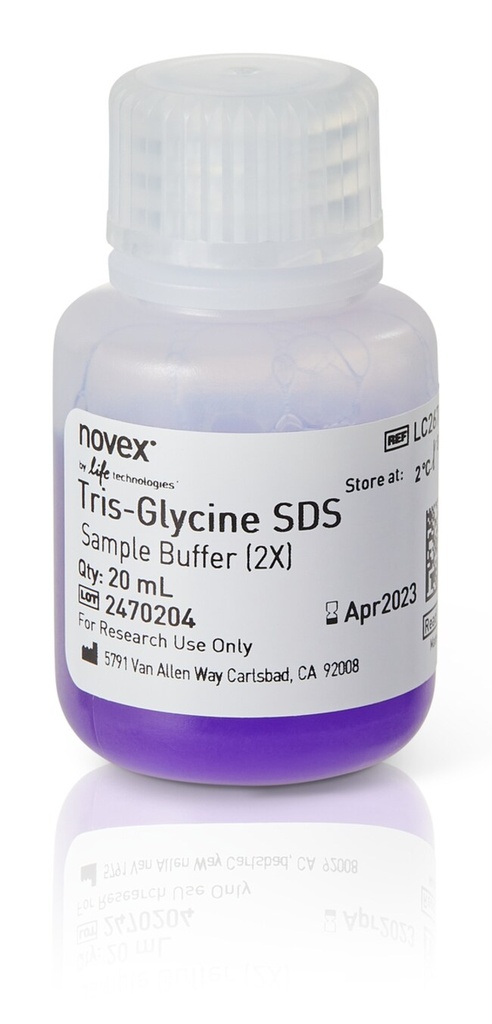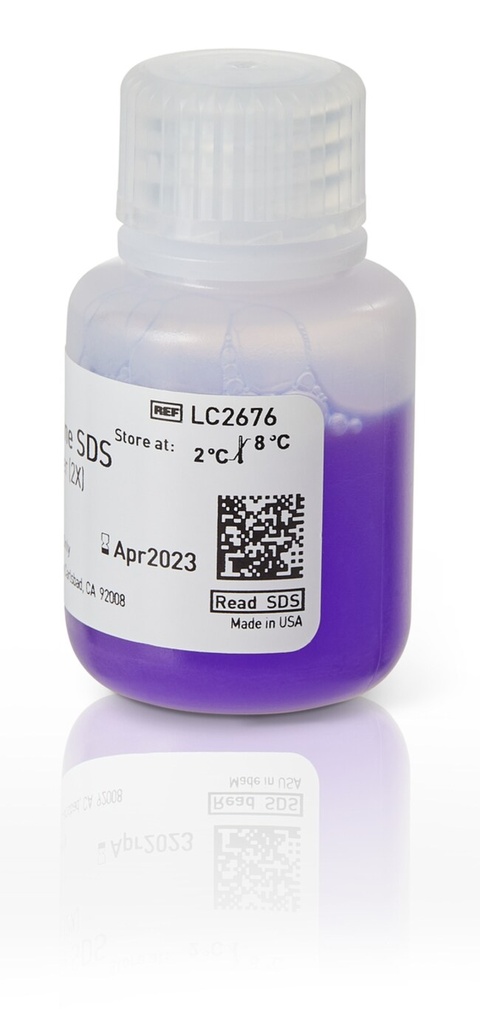Invitrogen™ Novex™ Tris-Glycine SDS Sample Buffer (2X), 20 mL
Catalog No :
CAS Number :
Brand :
In Stock
Specifications:
| Application | Protein Electrophoresis & Western Blotting | ||
| Storage Temperature | Room Temperature | ||
| Product Type | Buffer | Forms | Liquid |
| Product Brand | Thermo Fisher Scientific™, Invitrogen | ||
| Product Grade | Molecular Biology | ||
Invitrogen™ Novex™ Tris-Glycine SDS Sample Buffer (2X) is a ready-to-use loading buffer designed for preparing protein samples for denaturing SDS-PAGE using Tris-Glycine gels. With a pH of 6.8, this buffer includes sodium dodecyl sulfate (SDS) for protein denaturation and bromophenol blue as a visual tracking dye during electrophoresis.
It is optimized to ensure consistent protein migration and compatibility with common detection methods such as Coomassie staining, silver staining, and Western blotting. Its dual-use design allows for reduced or non-reduced sample preparation, depending on your workflow needs.
Key Features and Benefits
- 2X concentration – simple dilution for immediate use
- Includes SDS and bromophenol blue – for effective protein denaturation and run monitoring
- Optimized pH 6.8 – matches Tris-Glycine gel systems
- Heat-stable – best performance when samples are heated at 85°C for 2–5 minutes
- Versatile – use with reduced or non-reduced samples
- Avoids proteolysis – lower heating temperatures reduce protein degradation
Usage Guidelines
- Dilute 1:1 with your protein sample to achieve a 1X working concentration
- Heat the sample at 85°C for 2–5 minutes before loading
- Avoid heating above 90°C to minimize protein degradation in SDS-containing environments
- Compatible with Tris-Glycine gels for SDS-PAGE
Applications
- SDS-PAGE protein separation using Tris-Glycine gel systems
- Western blotting sample preparation
- Coomassie and silver-stain protein visualization
- General protein electrophoresis workflows
Novex™ Tris-Glycine SDS Sample Buffer (2X) is an essential reagent for any SDS-PAGE workflow using Tris-Glycine gel systems. With its easy-to-use formulation, optimized pH, and compatibility with denaturing conditions, it supports accurate and reproducible protein separation in research and routine lab settings.




 0
0



